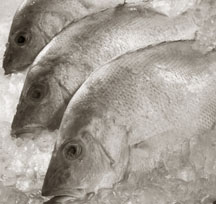|
observer |
|
|
|
|
|
OTHER LINKS |

|

|

|
From AbroadA skyscraper and some earthquake fearsTaipei 101 is a building with a lot to boast about. Standing 508 metres high, it is the world's tallest. And at 700,000 tonnes, it must be among the heaviest. But the sheer size of the Taiwan skyscraper has raised unexpected concerns that may have far-reaching implications for the construction of other buildings and man-made megastructures. It is thought to have triggered two recent earthquakes because of the stress that it exerts on the ground beneath it.
According to geologist Cheng Horng Lin, from the National Taiwan Normal University, the stress from the skyscraper may have reopened an ancient geological fault (break in layers of rock). If he is right, then it raises concerns about proposals such as Sky City 1000 in Japan, the vertical city that has been proposed to solve Tokyo's housing problems. And it is not just skyscrapers that are a problem. Dams and underground waste deposits may also cause rumblings if they become too large. Before the construction of Taipei 101, the Taipei basin was a very stable area with no active earthquake faults at the surface. Its earthquake activity involved micro-earth-quakes (less than magnitude 2) happening about once a year. Once Taipei 101 started to rise from the ground, things changed. "The number of earthquakes increased to around two micro-earthquakes per year during the construction period (1997 to 2003). Since the construction finished, there have been two larger earthquakes (magnitude 3.8 and 3.2) directly beneath Taipei 101, which were big enough to feel", says Dr. Lin in a paper published in the journal Geophysical Research Letters. Using the construction information, Dr. Lin has calculated how much pressure Taipei 101 exerts on the ground. The weight of steel and concrete came to more than 700,000 tonnes. This is spread over an area of 15,081 square metres, meaning it exerts a huge pressure of 4.7 bars on the ground below. It is the exceptional downward stress that Dr. Lin thinks may have caused the extra earthquakes. "I think that the considerable stress might be transferred into the upper crust due to the extremely soft sedimentary rocks beneath the Taipei basin. Deeper down, this may have reopened an old earthquake fault", he suggests. Trawl through history may help preserve fish stocksAmericans shunned lobster until the 1880s, while the ancient Romans loved fish so much that their catches depleted(reduced) the fish population in the Mediterranean, according to a study that may give clues about how to restore damaged world fish stocks.
Picking through ships' logs, archaeological sites and more than 200,000 US restaurant menus dating back to the 1850s, marine historians are finding that human tastes have let some species thrive, while other stocks have been overfished for centuries. "We can only model the future of the oceans based on past evidence", said Paul Holm, a Danish environmental researcher who is leading a team of about 80 experts in an international project on the history of marine animal populations. "We're trying to reconstruct the oceans as imaginatively as possible", he said. US restaurant menu prices from 150 years ago chart sometimes inexplicable (cannot be explained) swings in tastes and prices of seafood. "Back in the 1860s, no one wanted to eat lobster", said Glenn Jones, a researcher at Texas A&M University at Galveston, who leads the menu project. Giant lobsters weighing 9kg (20 lb) were common in New England. The size and number of vats(large tubs/tanks) used by the ancient Romans to make a popular fish soup indicate that they were overfishing many Mediterranean species 2,000 years ago, even though human populations were a fraction of 21st century levels. Jones said the menu project might encourage people to eat marine resources that put less pressure on stocks. - New cat on the blockThe Nihondaira Zoo in Japan's Shizuoka Prefecture confirmed recently that it has a new resident - a baby Amur wildcat. Zoo authorities confirmed the cat's birth when it first appeared from its hidey-hole a month later. The kitten weighs about 800 grams and is 35 centimetres from head to tail. Even though it has already tried nibbling on meat like its parents, it still relies on its mother's milk for sustenance.
The kitty spends most of its time inside its hole, but occasionally comes out to play around its pen with its mother, darting about as visitors gather to watch. Though resembling the common house cat, the baby Amur has rounded ears and two large vertical stripes on its face, and can already swim and catch fish. Amur wildcats are native to north-eastern areas of China, the Korean Peninsula and Japan's Tsushima Island, but trade in their exotic fur has pushed the wild population close to extinction. About 30 Amur wildcats live in zoos worldwide, including four in Japan. The Daily Yomiuri |










